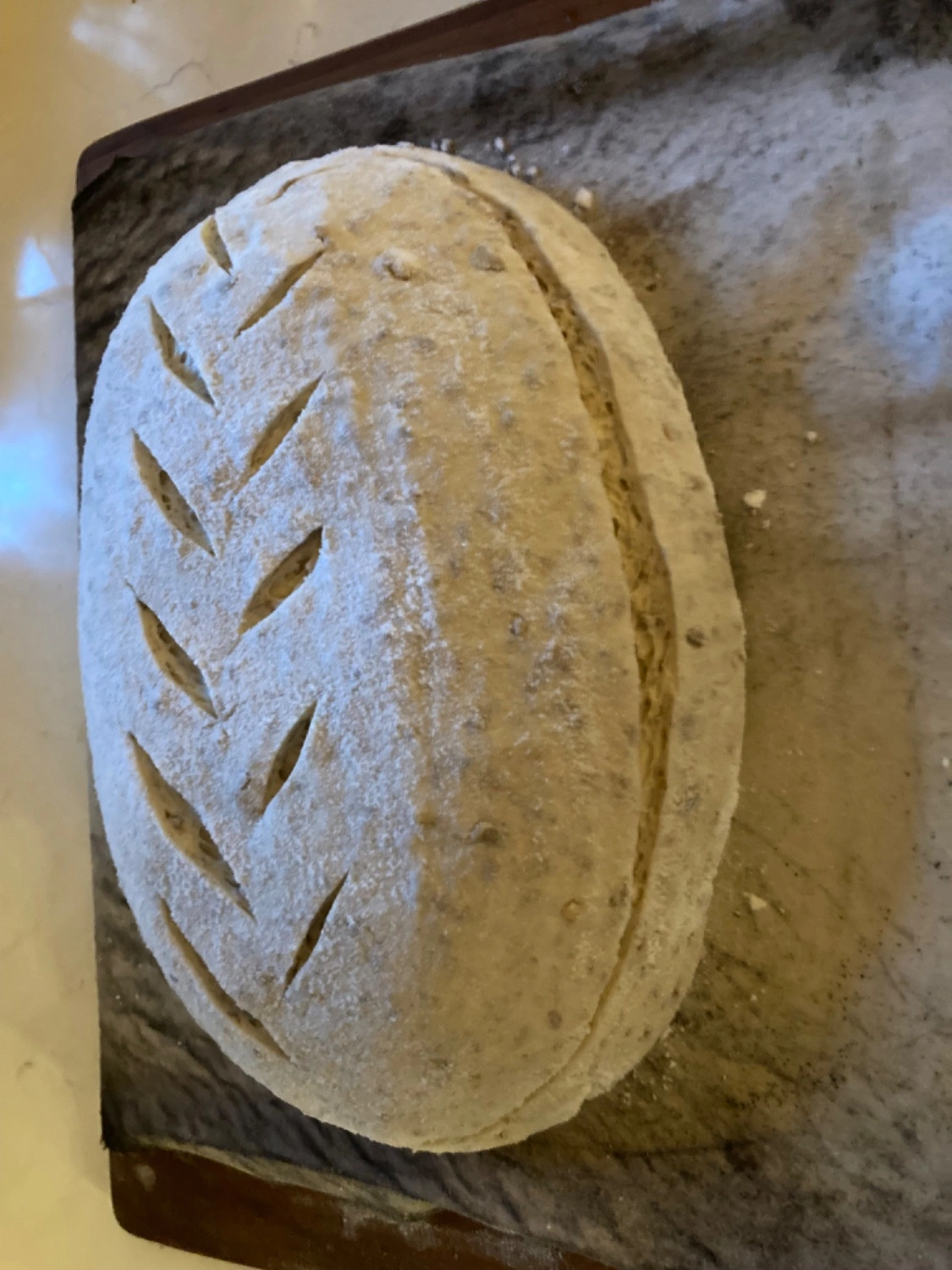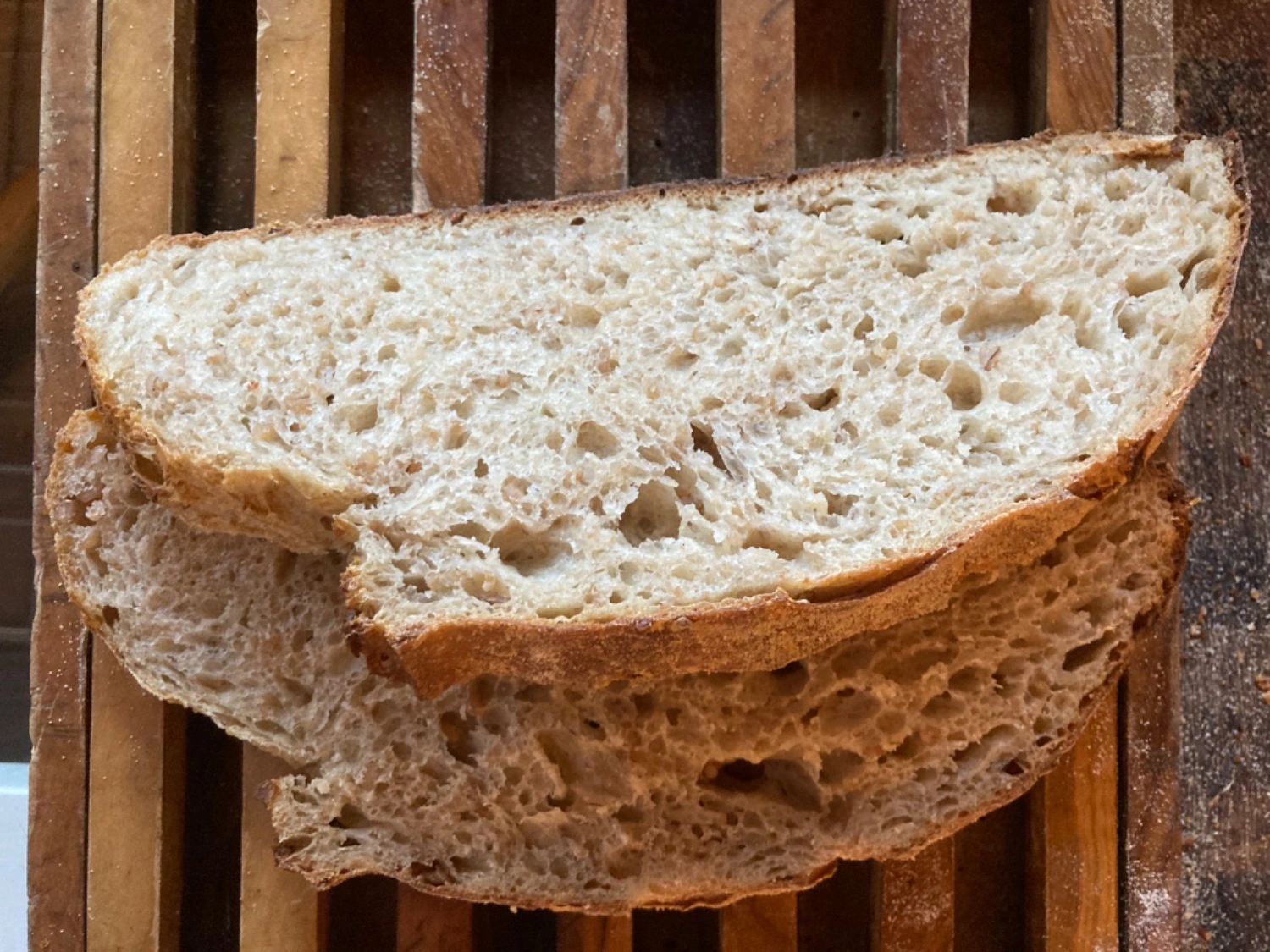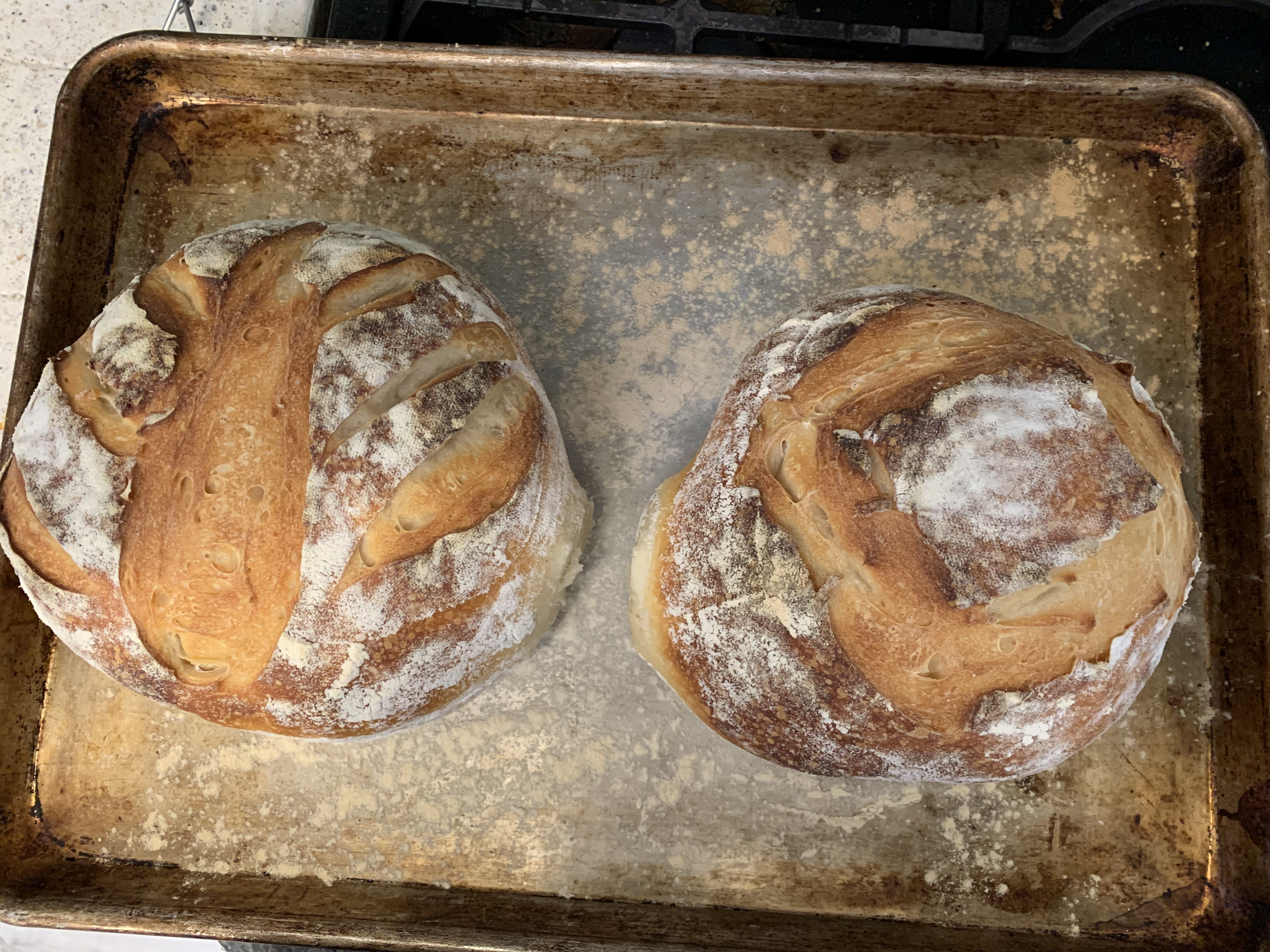

I’ve been refining my bread for the last decade, making all the bread my family consumes. Over the last couple of years I’ve arrived at something we are all really happy with. I’ll try my best to transmit what I’ve learned via this recipe. Feel free to ask questions in the comments.
- 100% bread flour
- 60% rye starter (1:1 course ground rye:water)
- 66% water
- 3% salt
Final hydration 74%
Example for one oval banneton:
- 500g bread flour
- 300g starter (150g water 150g course ground rye)
- 333g water
- 15g salt (preferably grey sea salt like Celtic)
Mix water, flour, and starter until fully hydrated. Sprinkle salt on top.
Wait 1-2 hours for autolyse and hydration.
Stretch and fold once every 30 min - 1 hour, at least 3 times and up to 5.
Bulk ferment 2 more hours.
Sprinkle liberally with rice flour, liberate from bowl with a plastic scraper, place rice flour side down in banneton, pinch top to stretch surface touching banneton, sprinkle rice flour on top.
Cover. Proof two hours or until banneton is filled.
Refrigerate 12 hours to 3 days, longer if more sour flavor is desired.
Preheat baking stone to 500°f / 260°c with a pan for water on a rack below the stone.
Liberate the bread onto a peel and score as desired. Place on stone and put a couple handfuls of ice cubes on the heated pan. Reduce temperature to 444° / 230°c and bake for 36 minutes.
Thanks for sharing! I also use a similar amount of starter and I now feel more validated 😅
Thanks for sharing! A very intriguing recipe will definitely try that out. Currently, I lean more towards using a cast iron pot for a reliable crust since I am fairly new to the backing business.
Baking in a preheated cast iron pot works great and removes the need for a pizza stone and creating steam in the oven. My pizza steel lives in my oven and I put the ice cubs on the bottom of the oven so this ends up being easier for me than using a pot.
Would you use a similar oven setup to bake pizza as well? I am still struggling with the pizza crust. It usually is too hard or too soft. The dough seems fine but I just can’t get a good crust.
I don’t add steam for pizza, just put it directly on the hot stone. The oven should be as hot as it gets, and an extra long preheat will help the stone fully heat up.
What’s your dough recipe like? Here is mine for New York style crust:
- 100g water
- 130g flour
- Pinch yeast
17 hours later
- 300g water
- 500g flour
- 14g salt
Stretch and fold every hour three times Ferment two hours Split into four and shape into balls, oil, proof for 2-3 hours
I either go for a short rise duration when there is not much time to spare with
- 300 g flour
- 10 g starch
- ~3 g olive oil
- ~100 g water
- 1 yeast cube
- 4 g salt
I shape the pizza directly then let it rest until the oven is preheated which usually takes around 30 minutes.
Or I go for a 2 day dough with a pre dough of
- 100 g flour
- pinch of yeast
- ~100 g water
Which I mix with the remaining
- 200 g flour
- 4 g salt
- ~3 g olive oil
after ~12 hours.
Then I let that rest for another 2 hours. I haven’t really worked out a routine yet on the fermentation.
These recipes look good! The second one is very similar to mine. I’m curious about the starch addition. What kind of starch and why?
I’d recommend letting the dough rest 20min before kneading. You may need to develop the gluten structure more to improve the texture. I find the stretch and fold method to be less time intensive and much more effective.
I am using corn starch. I don’t have any scientific proof but the dough just feels more flexible adding some.
Patience is a virtue, I will try to be patient. Thank you for that advice. Definitely have to read up more on the topic of kneading and resting.
Interesting that you are using a rye starter. I wonder what effect that would have over using a wheat starter but with the same amount of rye in for the bulk ferment. Also seems like you use a higher percentage of starter than most, how’d you settle on that?
I use rye for the starter because I enjoy the flavor, it seems to rise faster, and it seems to harbor more diverse microorganisms (this is just my unscientific subjective sense).
The higher percentage starter is just for ease of use, ending up with the percentage of rye I like and fully filling my starter jar. Basically all the amounts, times and temperatures are a bit idiosyncratic to my own process and not necessarily objective optimizations.
Basically all the amounts, times and temperatures are a bit idiosyncratic to my own process and not necessarily objective optimizations.
That’s how sourdough should be, in my opinion. The whole point of keeping a starter and making sourdough is that it’s yours.
I agree! My starter’s called Bubbly Jeff, child of Bubbles and Jeff the elder.


